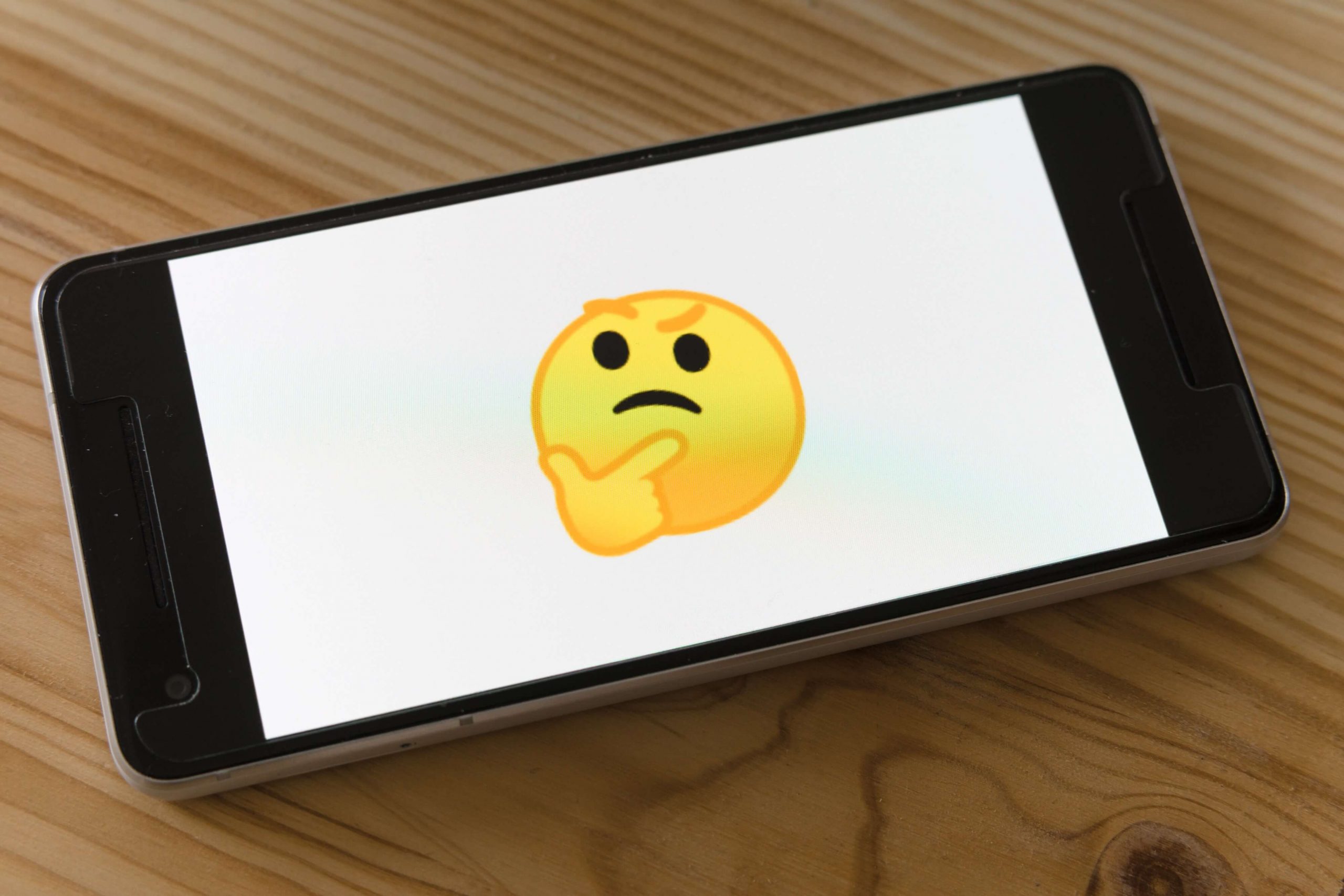With World Emoji Day on July 17, the question of whether emojis belong in a professional setting is raised once again. Do emojis say creative, fun, engaging, or do they say unprofessional? The answer? There’s no better place to use emojis than on social media and doing so can transform your posts from mundane to fun. And yes, emojis are great for the finance space too! Let’s dive into some of the top reasons why your brand should include emojis in its marketing.
Emojis by numbers
- Emojis soared in popularity in the 2010s after most major phone brands added emoji capabilities to their devices, but they were actually developed way back in the late 1990s by the Japanese communications firm NTT DoCoMo.
- By 2022, it’s expected there will be a total of 3,460 emojis with updates including beans, a pregnant man, and finger hearts (popularised by K-pop stars).
- 10 billion emojis are sent every day and 95% of internet users have used emojis
- On Twitter, 18.69% of tweets contained at least emoji at the beginning of 2020, but by June of 2020, this rose to above 20% for the remainder of the year.

Unsure about whether to incorporate emojis into your social media posts? Here are five reasons why you should.
#1 Emojis are (just about) universal
Marketing on social media has the great advantage of being read anywhere by anyone. The only fly in the ointment is language barriers. And that’s where emojis come in. Emojis are almost completely universal in their meanings and can be unanimously understood by hugely diverse audiences. This is perfect for marketers who can save on translation costs and forgo the need to modify social media posts according to region. For example, Pizza Hut’s new menu is written entirely in emojis! We’ve also seen road signs, billboard banners, voting polls and entire ad campaigns written in emojis.
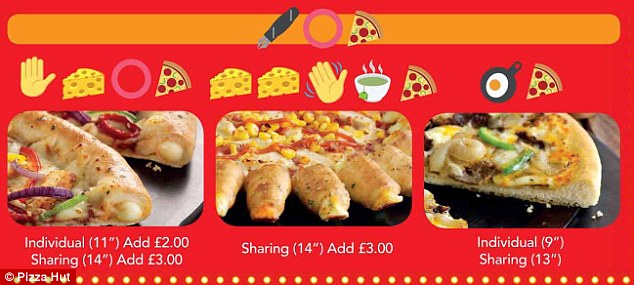
With this said, even emojis have the potential to be lost in translation. For example, the ‘thumbs up’ emoji when read by some middle eastern audiences could be interpreted as the equivalent of giving the middle finger! A message you probably don’t want to send. The ‘smiling poo’ emoji to most of the world signifies slight misfortune or self-mockery with an air of silliness – to a Japanese user though, you’re wishing them good luck. This stems from the homophone ‘kin no unko’ which means both good luck and golden poo. And is it a praying emoji or a high five? Are people actually high fiving natural disasters on Twitter?

Also certain emojis can have alternate meanings not rooted in language differences. For example, the peach and aubergine/eggplant emojis are more commonly used to denote certain body parts. If you’re a fruit and vegetable company marketing your new peach-infused beverage, you may want to steer clear of including the peach emoji in your tweet.
Takeaways
- Keep it simple – use familiar emojis that create a self-explanatory story and leave little to no guesswork; otherwise the meaning could be misconstrued.
- Pay attention to cultural differences and alternate meanings of emojis.
- Don’t use them for key messaging where they may be misunderstood or not understood at all.
#2 Emojis engage fans
Social media managers don’t only use emojis because they’re fun (although that is a reason). Emojis work wonders for engagement. Using an emoji in a tweet can increase engagement by 25% compared to without. In a Facebook post, you can see shares increase by 33% and interactions by 57%. For Instagram posts, engagement can go up by 48%.
Adespresso ran a test to see if Facebook ads that used an emoji achieved a higher click-through rate.
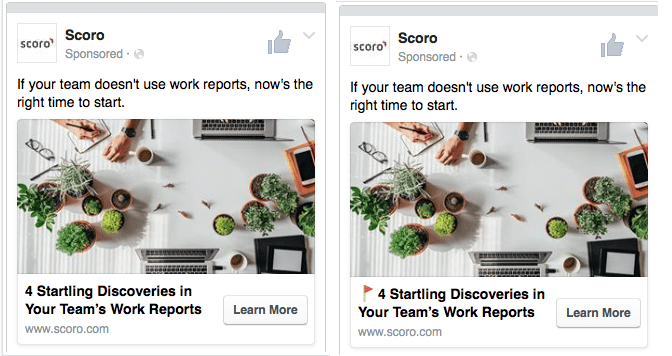
As you can see above, the two ads were identical bar that solitary emoji in the headline. The results? The ad with an emoji enjoyed a 241% higher click-through rate.
Despite these incredibly promising emoji stats, it’s not guaranteed that by finishing off your caption with an emoji, you’re suddenly going to be flooded with likes, comments and shares. The quality of your content still matters, and cute emojis won’t do all the work for you. But, it really does seem like emojis are one part of the pie that can mean great engagement on social media.
Emojis are shown to increase engagement on other mediums besides social media. For example, evidence suggests that including an emoji in an email subject line boosts click-throughs with 58% of people saying they are more likely to open an email with an emoji in the subject line with this going up to 64% of people if it’s their favourite emoji. You could also try including emoji reactions on your site using a plugin like Emojics.
Takeaways
- Emojis won’t replace good copy. Use them as a finishing touch but don’t rely on emojis alone.
- Increases in engagement through emoji use is going to depend on a whole range of variables like follower count, post content, your industry, your images and more.
- Take out the guesswork by running split tests to get a picture of your post or campaign engagement with and without emojis.
#3 Emojis make innovative marketing campaigns
Digital marketers today are facing fierce competition and your campaigns need to have an air of creativity and innovation about them. You should also be looking at user trends and integrating these into your posts. Pizzahut below often adds emojis to its captions and fans reply with them too (yes we are all about the pizza).
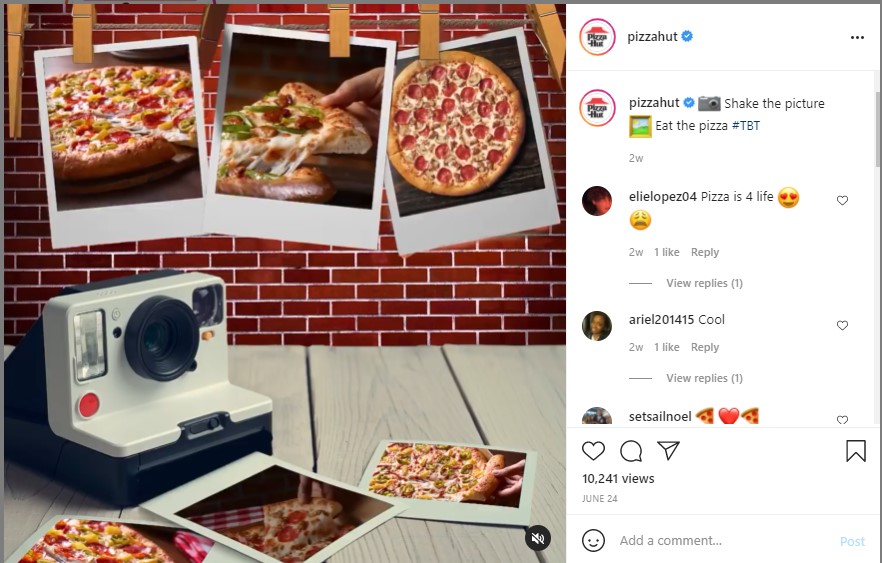
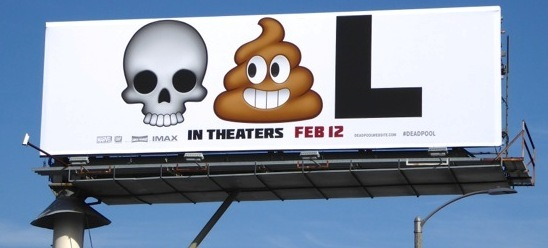
Take for example the above billboard campaign. It’s so ridiculous that it’s actually genius. You can’t help but notice it and try to decipher the message. Did you get it? Dead. Poo. L.
Use emojis only on a case-by-case basis. Emojis won’t suit every post you make and therefore, shouldn’t be used on every occasion. Also, take into consideration your audience’s stance on emojis – where 80% of millennials and Gen Z have no problem with brands using emojis in their communications, this goes down to 67% for boomers.
4. Emojis work with human psychology
When we speak face-to-face, we don’t rely only on the words that are spoken to convey and gauge emotion. As much as 70% of human emotional expression may come from non-verbal cues, this includes things like facial expressions, body language, and tone. Things that can’t be conveyed through text alone. So, how can marketers effectively communicate human emotion on social media? I’m sure you see where this is going. A study by Gantiva et al. (2020) found that emojis elicit similar neural responses for the reader as human faces do.
Emojis can represent us in terms of gender, ethnicity, sexuality:
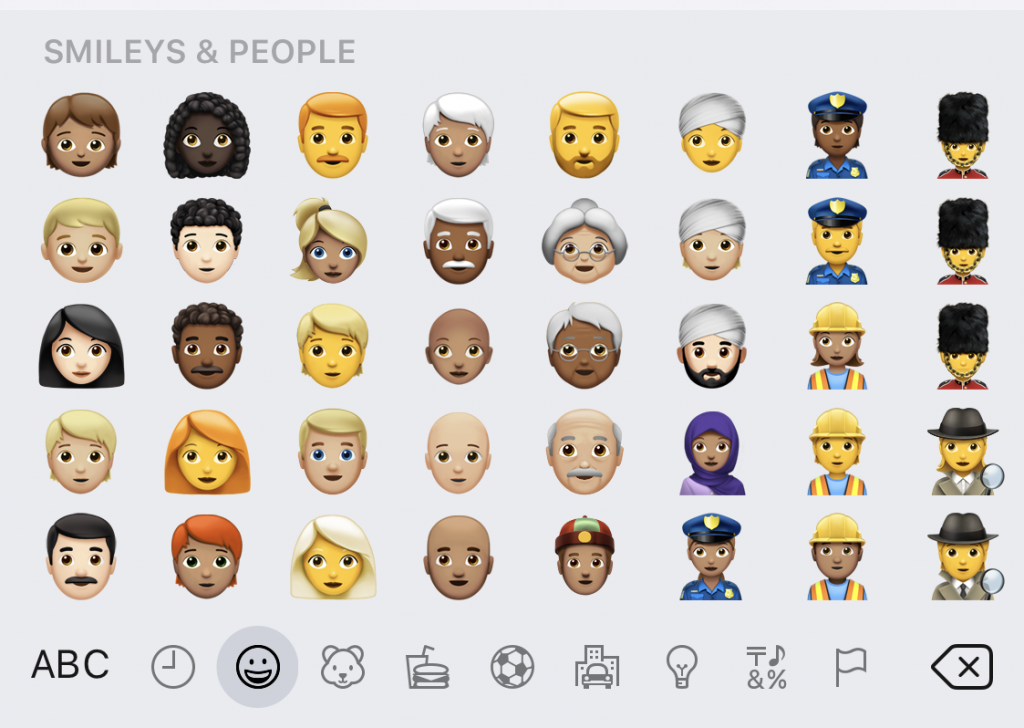
Psychologist Dr. Owen Churches explains “
Before 1982 there would be no reason that ‘:-)’ would activate face-sensitive areas of the cortex but now it does because we’ve learned that this represents a face. This is an entirely culturally-created neural response. It’s really quite amazing.”
This is good news for brands who can use emojis to express emotion that would be difficult to convey via text alone, humanising your brand and relating to customers.
Takeaways
- Use emojis to express emotions where words alone won’t do. This could be on posts or when replying to comments or messages.
- An obvious one but still worth mentioning: keep your emojis friendly to foster positive brand association.
- Keep it authentic: match your emoji use with your genuine emotion to avoid coming across as insincere
#5 Emojis aren’t ‘low-brow’
There’s plenty of brands out there that still think emojis are only for tacky companies. They’re not! It’s important to remember that if a brand is on social media, it is interacting with social media users. And social media users are emoji users. To think that brand is ‘above’ emojis is to think it is above the majority of internet users.
Even the official UK Prime Minister’s office utilises the power of the emoji when it suits:
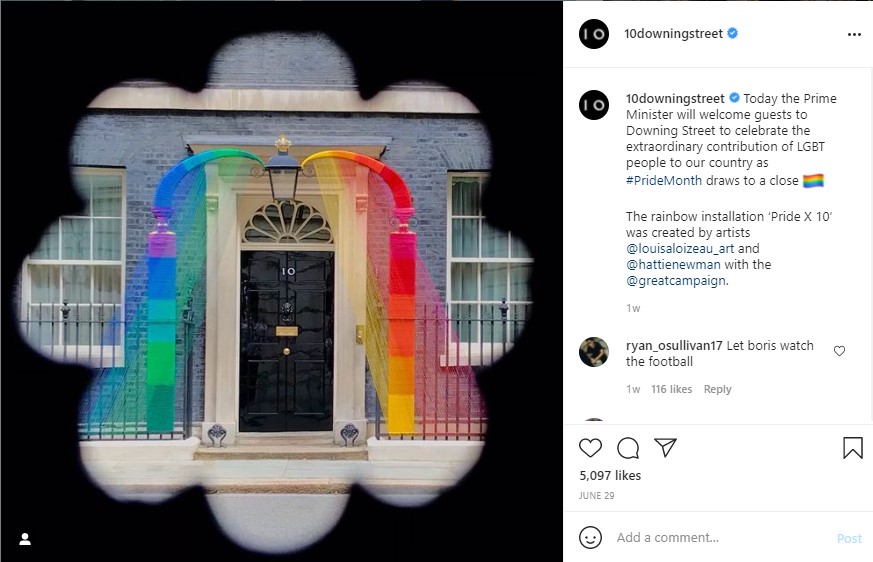
Wise (formerly TransferWise) is a brand that gets it. Despite being a fairly ‘serious’ finance brand, they routinely use emojis to complement their copy.

Takeaways
- Check out your closest competitors and see how they use emojis to interact with followers.
- Nobody is ‘above’ or ‘not right’ for emojis. Even the most serious of brands use them, right down to governments and the legal sector.
- Consider getting your own emojis made (yes it’s a thing!) Download an emoji creator app. Create your own custom emoji faces. and share them with colleagues and clients!
Emojis and accessibility
Approximately 300 million people are blind or severely visually impaired across the globe. Accessibility in technology in recent years has made bounds of progress with several programs and features available for people with disabilities to access technology. The use of social media is pretty much ingrained into society and a huge development in technological accessibility is the screen reader feature now found on most devices. Screen readers read aloud any text on a user’s screen so users can navigate through their phone, the web and social media. How about emojis? These can also be read aloud using their descriptions. For example, when you see this emoji – 😎 – a person using a screen reader would hear ‘smiling face with sunglasses.’
When using emojis it’s important to remember that people may be hearing them via a screen reader. If you were to post a tweet that finished with ‘be sure to follow our link and fill in your details to be in with a chance to win our cash draw 🤑🤑🤑’, a person using a screen reader would hear the following:
‘Be sure to follow our link and fill in your details to be in with a chance to win our prize draw excited face with money symbols for eyes and stuck-out tongue excited face with money symbols for eyes and stuck-out tongue excited face with money symbols for eyes and stuck-out tongue.’
How can I make my social media posts with emojis accessible?
- Limit emojis. While one or two emojis can be enjoyed by visually impaired people, excessive use of emojis becomes tedious and disorientating.
- Don’t use more than one emoji in a row, especially not the same emoji.
- Use your discretion: if you have an idea for a post that uses a copious amount of emojis but isn’t great as far as accessibility goes, you may still choose to post it. But don’t make it a habit, consider how your brand is being portrayed to visually impaired people.
Marketers’ favourite social media emojis
These are the top 10 emojis used by digital marketers on social media including LinkedIn, Facebook, Twitter, Google Plus, and Instagram.
#1 👉
#2 👇
#3 😉
#4 🎉
#5 🤔
#6 👏
#7 🚀
#8 🔥
#9 🎄
#10 👀
Emojis for the best engagement
These emojis have helped some marketers see better engagement on social media and are definitely worth trying.
#1 🙆
#2 🍒
#3 🐠
#4 💃
#5 🌤
#6 💘
#7 😔
#8 💕
#9 😢
#10 💓
You’ll notice many of these are less frequently used emojis which could mean that uncommon emojis see better engagement because of the fact they are unusual and therefore get more noticed.
Looking for emoji tools ?
Here are some of our faves.
Emojipedia: Using a similar format to Wikipedia, Emojipedia has information on every single emoji there is in existence, their meanings, as well as stats and figures on emojis.
Emoji Tracker: This site gives you real-time stats on the popularity and usage of emojis on Twitter.
Apple Animoji: If you have an iPhone with facial recognition, you have the ability to create animated emojis of yourself! These can be both still and video form.
Emojis are growing in popularity and can accompany great copy to increase engagement, and secure more conversions. Enjoyed reading Should Your Brand Use Emojis on Social Media? Go ahead and hit share. Talk to Contentworks Agency about managing your social media marketing. In the meantime – Happy Emoji Day!
